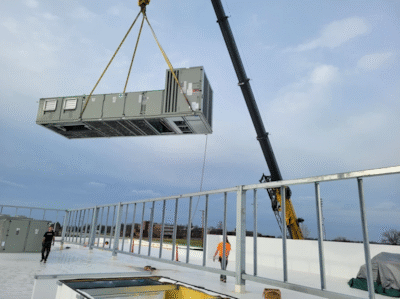Optimizing Comfort and Efficiency: The Crucial Role of Commercial HVAC Air Balance Tests
In the realm of commercial spaces, where comfort and productivity intersect, the significance of HVAC systems cannot be overstated. One key aspect that often goes unnoticed but plays a pivotal role in ensuring optimal performance is the air balance test.
Commercial HVAC air balance tests are not merely routine checks; they are the heartbeat of a well-functioning system. These tests involve assessing and adjusting the distribution of air within a building to ensure uniform temperature, humidity, and air quality. Here's why this process is indispensable:
 Enhanced Comfort: An accurately balanced HVAC system guarantees consistent airflow throughout the premises, eliminating hot and cold spots. This translates to a comfortable environment for occupants, whether they are working in offices, attending meetings in conference rooms, or walking through common areas.
Enhanced Comfort: An accurately balanced HVAC system guarantees consistent airflow throughout the premises, eliminating hot and cold spots. This translates to a comfortable environment for occupants, whether they are working in offices, attending meetings in conference rooms, or walking through common areas.
- Energy Efficiency: Imbalances in the air distribution can lead to overcompensation by the HVAC system in certain areas, resulting in unnecessary energy consumption. A well-balanced system operates efficiently, reducing energy costs and contributing to environmental sustainability.
- Extended Equipment Life: Properly balanced HVAC systems experience less strain on components, leading to reduced wear and tear. Regular air balance tests can significantly extend the lifespan of HVAC equipment, sparing businesses from premature replacements and unexpected expenses.
- Optimized Air Quality: In commercial settings, maintaining high indoor air quality is imperative for the well-being of occupants. Air balance tests ensure that air is properly filtered and circulated, mitigating the risks of pollutants and contaminants that can affect respiratory health.
- Compliance and Certification: Many local building codes and industry standards mandate regular HVAC testing for commercial properties. Compliance with these regulations not only ensures a safe and healthy environment but also protects businesses from potential legal repercussions.
- Preventive Maintenance: Identifying and rectifying air balance issues early on can prevent more significant problems down the line. Regular testing serves as a proactive measure, minimizing the chances of costly breakdowns and disruptions to daily operations.
In conclusion, the air balance test is not just a box to tick on a maintenance checklist; it is a proactive strategy for optimizing the performance, efficiency, and longevity of commercial HVAC systems. Businesses that prioritize these tests not only create a more comfortable and productive workspace but also position themselves as stewards of energy conservation and environmental responsibility.
Related Topics: Commercial HVAC, Sheet Metal Fabrication, General Contractor Services, Commercial Construction
Browse Topics
- Pure News
- Construction Services
- General Contractor Services
- Sheet Metal Fabrication
- Commercial HVAC
- HVAC Maintenance
- Energy Efficient Construction
- Construction Safety
- Workforce Development
- Community & Urban Revitalization
- Minority Construction Contracts
- Minority Business Enterprise (MBE)
- Multi-Family Construction
- Affordable Housing Construction
- Municipal Construction
- Restaurant Construction
- Retail Construction
- Contractor & Subcontractor Training